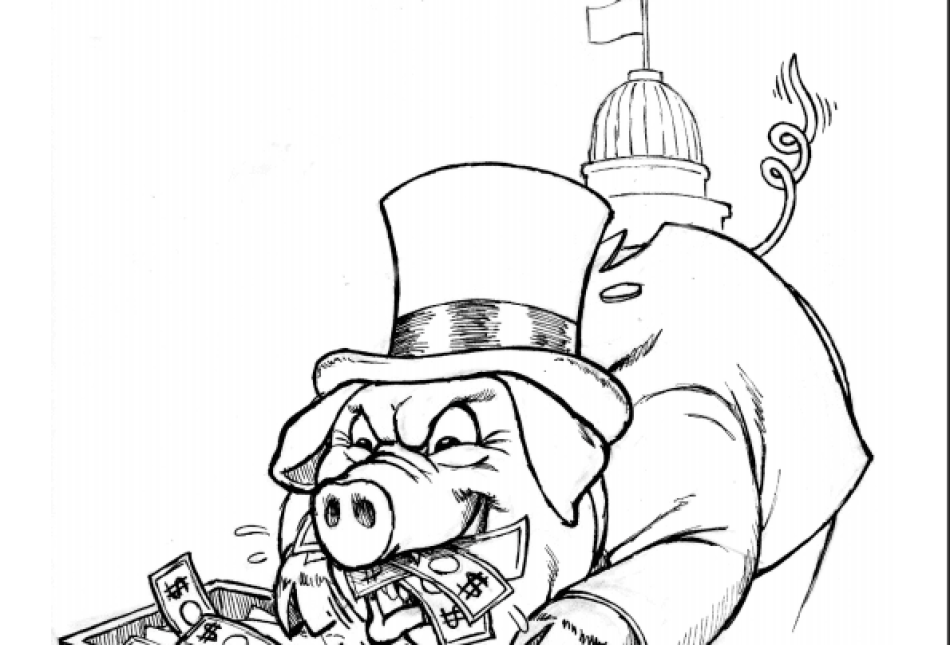Plenty of Wasteful Spending in NM Budget

According to the latest numbers, New Mexico faces a $454 million budget shortfall. For just the third time in 20 years, revenue is expected to decline during the current budget year. Certainly, the ongoing financial crisis and subsequent rapid drop in oil and gas prices are at the heart of the issue, but the good times were destined to come to an end for New Mexico which had been living beyond its means for several years.
Under Governor Richardson alone, who took over as Governor in 2003, general fund spending has jumped from $3.9 billion to $6.0 billion where it stands today. That is an astounding increase of more than 50 percent in six short years. Given such rapid growth, New Mexico should be able to rely on spending cuts rather than tax increases to fill the current spending gap.
The thesis that spending must be the focus of efforts to close the budget deficit is central to our recently-released “2008 Piglet Book” which outlines wasteful and unnecessary spending here in the Land of Enchantment. The piglet book which is a joint project of the Rio Grande Foundation and the Washington, DC-based Citizens Against Government Waste, both illustrates some of the most egregious government programs and projects of recent years and provides dozens of ideas for elected officials who might be looking to save money and maintain their state’s financial solvency.
No list of wasteful spending would be complete without first mentioning the $400 million Rail Runner ($20 million annually to operate) and the $225 million Spaceport America, both of which are extremely costly and benefit relatively small groups of people given their overall cost. But did you know that taxpayers are spending $200,000 to equip the men’s and women’s golf teams at the University of New Mexico? I love golf, but with only 23 players combined on the two teams, this comes to $8,700 per golfer. That seems a bit high for even the finest golf clubs and bags.
There is plenty of money for athletic programs spread throughout recent capital outlay bills including more than $2 million for a single golf course in San Juan County. Human athletes don’t receive all the subsidies, however. Governor Richardson recently affirmed that the state plans to move forward with a $22.3 million equestrian facility, but plans to move it to the state fairgrounds in Albuquerque.
There are plenty of other troubling projects sprinkled throughout the budget and around the state that the average taxpayer would likely consider wasteful:
- $500,000 was appropriated to acquire property and equipment to subsidize logging in San Miguel County;
- $200,000 to purchase a dump truck and other construction equipment, including a grader, bulldozer, and front-end loaders, for the Pueblo of Picuris in Taos County. According to the 2000 Census, the Pueblo had a population of 86;
- $800,000 to develop the site for and plan, design and construct a garden and outdoor learning center at San Juan College in Farmington.
There is no doubt that each of these projects has their supporters. After all, without support from a legislator or the governor, they would never have been passed into law. That minimum of support doesn’t mean that these projects are not “pork” or that they are not inherently wasteful.
In fact, we challenge supporters of these projects to provide evidence that these projects actually benefit a majority of New Mexico taxpayers who will be footing the bill. After all, with New Mexico facing a half-billion dollar deficit, even worthy programs and projects are on the chopping block. Shouldn’t we at least begin by cutting programs like those outlined in our report?
The aforementioned are only a handful of the dozens of projects included in the “2008 New Mexico Piglet Book” which is available for free on our website at www.riograndefoundation.org. I urge you to take a look at it and make sure that your legislators know that they should cut wasteful spending rather than raising taxes in order to close the budget deficit.
Paul Gessing is president of the Rio Grande Foundation, a non-partisan, tax-exempt research and educational organization dedicated to promoting prosperity for New Mexico based on principles of limited government, economic freedom and individual responsibility.
